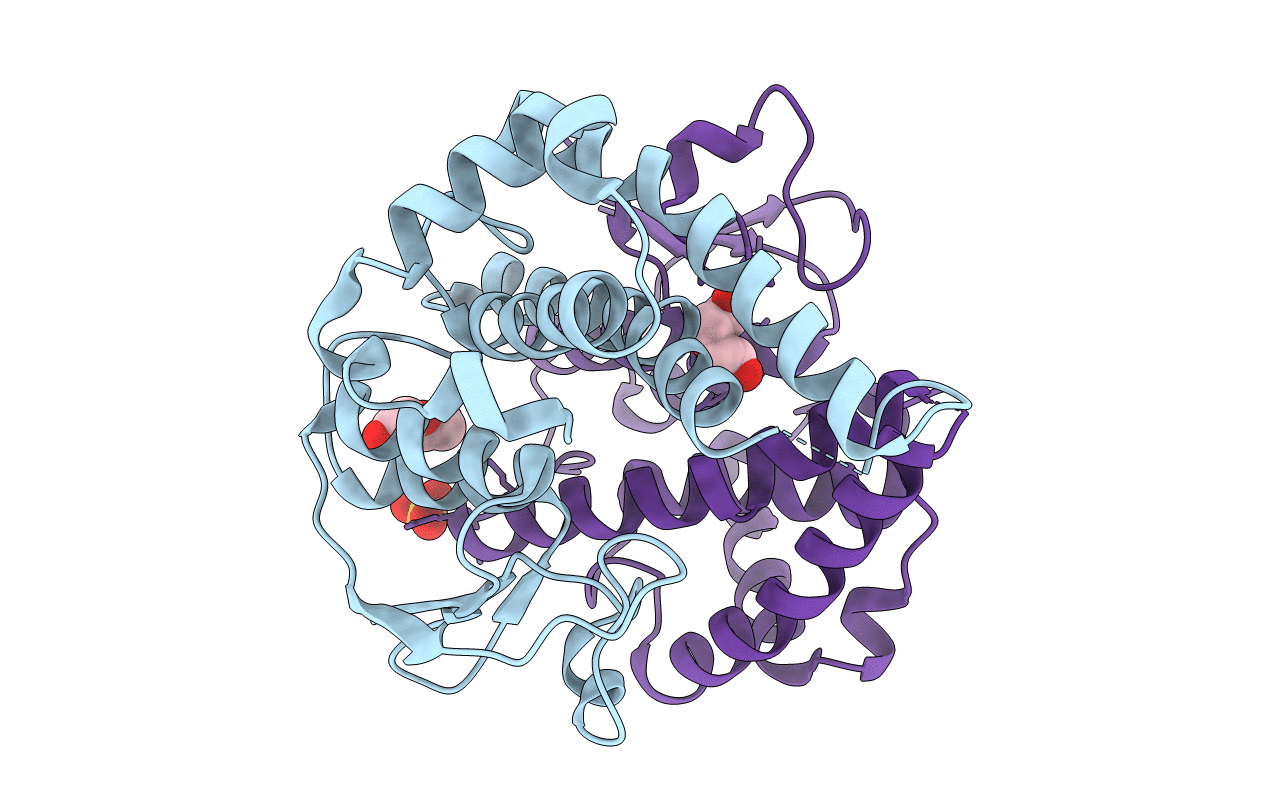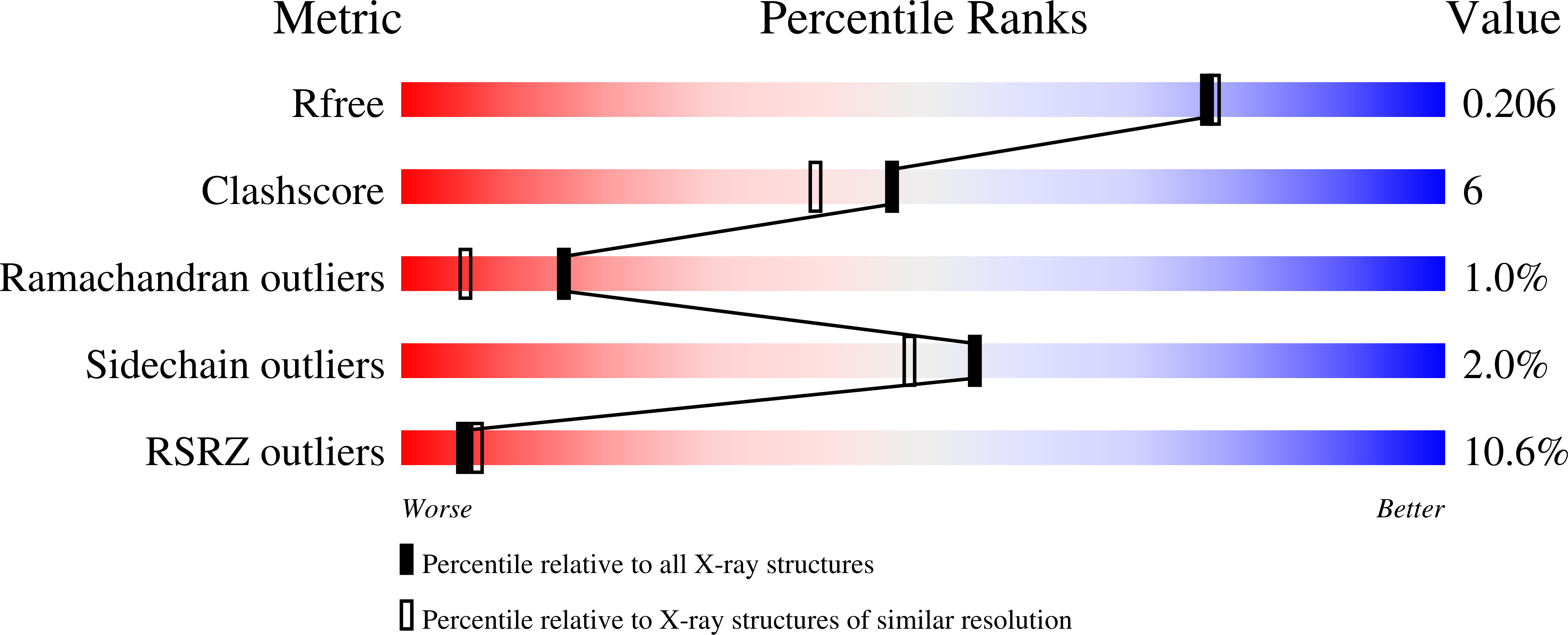
Deposition Date
2021-04-17
Release Date
2021-07-07
Last Version Date
2023-10-18
Entry Detail
PDB ID:
7MIQ
Keywords:
Title:
Crystal structure of a Glutathione S-transferase class Gtt2 of Vibrio parahaemolyticus (VpGSTT2)
Biological Source:
Source Organism:
Vibrio parahaemolyticus (Taxon ID: 670)
Host Organism:
Method Details:
Experimental Method:
Resolution:
1.92 Å
R-Value Free:
0.20
R-Value Work:
0.16
R-Value Observed:
0.16
Space Group:
P 1 21 1


